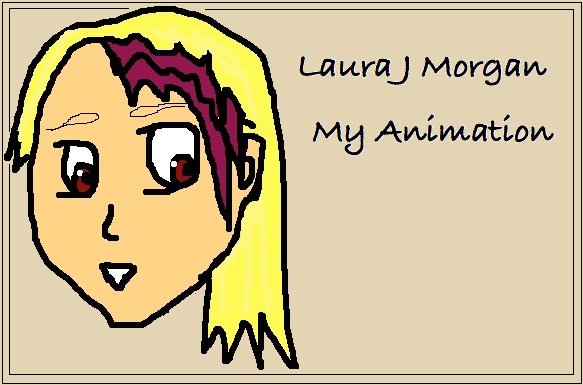Animation, is not, as so many of us think, a new art form. In fact animation has been developing for thousands of years throughout the world.
As early as 4000 years ago, the ancient Egyptians painted murals of people in mid movement with each picture at a different stage. The Persians and Ancient Greeks painted in a similar way on bowls and vases, so when spun the picture would appear to be moving. These are clear examples of artist's moving towards moving images and animation, despite not having the technology that is available today.
In the Victorian era, inventions to make images move were normally intended to amuse children.
The Zoetrope was first invented in China around 180AD and then modernised in 1834 by the English inventor William Horner. However, these weren't popular until the 1860’s when it was patented in England and America. The device had a cylinder shaped drum with vertical slits around its edge and a long strip of images around the inner edge. Thus, the illusion of movement was created when the viewer looked through the slits whilst the device was spun. The faster the device is spun the smoother the animation appeared to be.
From the Zoetrope came the Phenakistoscope (1831). This was similar to the Zoetrope however instead of a cylindrical drum, the Phenakistoscope was a small disc with images drawn in order around its circumference. The disc had slits cut into it and was mounted against a mirror so that each of the images were reflected back at the disc. To view as animated motion all the viewer had to do was spin the disc and look through the slits. This was developed further into the Praxinoscope.
The Praxinoscope was invented in France 1877, by Charles- Emile Reynaud. The Praxinoscope combined both features of the Zoetrope and the Phanakistoscope. It had the same basic appearance as the Zoetrope, but used a series of small mirrors inside of the cylinder drum to view the images instead. The mirrors were fixed in place and the images would spin round and would be reflected in turn. This method produced an image of better clarity and quality. Reynaud also developed a larger version of the Phanakistoscope which he called the Thréåtre Optique, to show images on a screen and, in essence, was an early projector.
Another Victorian invention for animation was the Tramatrope, developed in 1824. This was (and still is) used to entertain children as a very simple toy. Two separate images were draw on to disc of card and placed back to back and attached to string. The string was twisted tightly and then pulled to make the cards flip round and round. If done quick enough the two images appeared to be one image. For example, if one image is a bird and the other is a cage then the viewer would see a bird in a cage.
Kinographs, better known as flipbooks or thumb cinemas, were first patented in 1868 by John Barnes Linnet, an English printer. A flipbook was a sequence of images drawn onto paper which, when flicked in order gave the illusion of a moving image. The technique was so effective that, even today flip books are being used to entertain children and teach students the basics of animation. The flick technique is even used by professionals, who would flick through their animation drawings to get a rough idea of the action before finalising them.
At the beginning of the twentieth century the animation industry really began to kick off.
After the invention of the motion camera in 1889, Emile Cohl combined 700 images on to film. He photographed each image individually and then combined them together so that they appeared to be moving on film. He released “Fantasmagorie” in 1908 which was the first fully animated film ever made and lasted almost two minutes. Other animations soon followed as other animators were inspired by Cohl’s achievements.
George Melies began making his own animated film, after he had purchase his own motion camera. He was most famous for his film “A Trip To The Moon” featuring a face in the moon, which has been referenced in many other animations since.
The Development of Celluloids in 1913 made animation a lot easier to deal with. Transparent cells were used to draw on the animations, meaning that artists could incorporate detailed and complex backgrounds and foregrounds with out having to draw them out over and over again and sandwich the moving image between the cells when it came to capture them. Walt Disney’s "Snow White and the Seven Dwarves" is widely considered to be the first feature length film to use Cel animation.
By using celluloid’s, animators were able to use perspective to show depth in their animations, however it was difficult to show realistic distance within their animations. For example when moving closer to the image, everything would get bigger, even the things that wouldn’t necessarily in real life, like moon. In 1940, Disney invented the multi plane camera that did create realistic distance in the animation. Instead of the camera moving closer or further away from the images, the images would move closer or further away form the camera and each cel had a different plane, so that they could keep the correct distance. You can see this demonstrated in Disney’s Silly Symphony “The Old Mill” in which the moon stays the correct size as each of the planes move near to the camera when zooming in on the old mill. This gives the viewer the sense that they are travelling down the path towards the old mill.
The use of CGI animation completely revolutionised the world of animation. The first feature length film to use CGI was Pixar’s Toy Story which capured the hearts of audiences around the world.
CGI uses many of the same techniques as traditional animation, but replaces drawing with 3D modelling, almost like virtual Stop motion.
Refences:
www.randommotion.com
www.terramedia.com
animation.about.com
www.wikipedia.com
